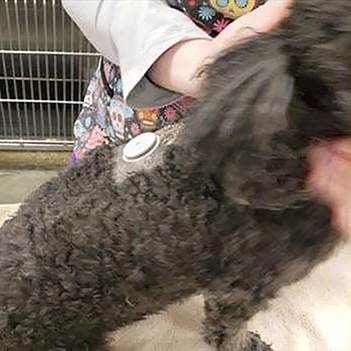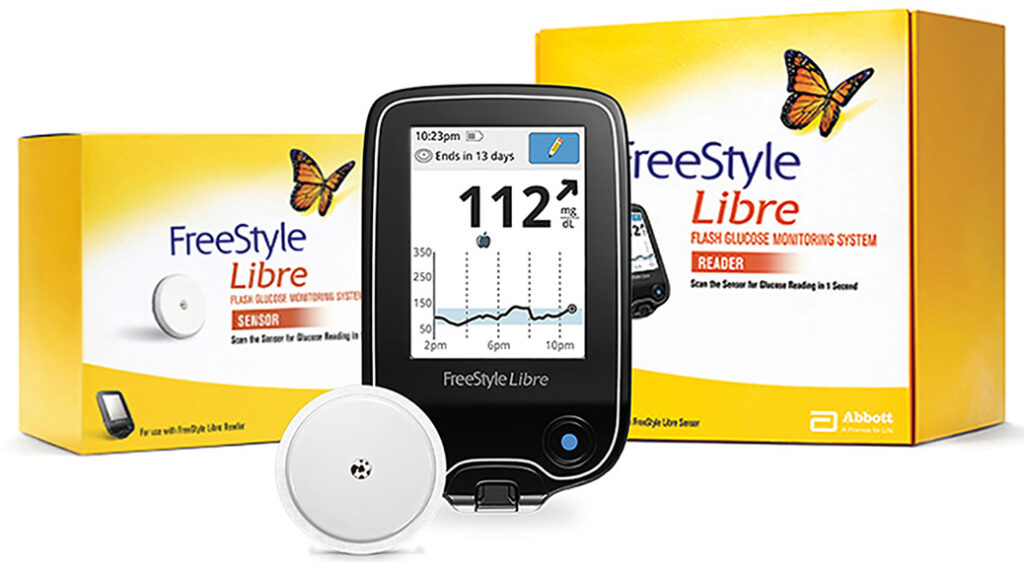For owners of diabetic pets—about one of every 300 dogs and one of every 230 cats—monitoring blood glucose (blood sugar) levels is a familiar part of diagnosing and managing the disease.
Traditionally, veterinarians have relied on blood glucose curves to evaluate diabetic pets’ blood glucose levels. To set the data points for the curve, we would draw blood every 2 hours during a day-long stay at the clinic, providing us with 4 to 6 separate test results to chart the pet’s blood glucose levels at intervals throughout the day.
Many patients tolerated the repeated blood draws well, but some were understandably uncooperative. After all, who wants to spend an entire day at the hospital having blood drawn every couple of hours?
The resulting struggles with resistant pets were not only stressful for patients and team members but sometimes caused blood sugar to rise—a condition called stress hyperglycemia—making the results potentially unreliable as an indicator of the pet’s blood glucose levels on a normal day at home.
We also had no convenient way to use traditional blood glucose curves to monitor fluctuations in blood glucose levels after-hours and during the night.
A Better Way
We’ve recently adopted a faster, easier, more comprehensive and less painful way to monitor diabetic pets’ blood glucose levels—a continuous glucose monitoring (CGM) system that uses a sensor applied to the pet’s skin and a hand-held reader or a smartphone app the pet owner uses at home to scan and automatically upload data from the sensor.
Used in human medicine for nearly a decade, Abbott’s FreeStyle Libre 14-day CGM system is now Brownsburg Animal Clinic veterinarians’ method of choice for monitoring pets’ blood glucose levels to help diagnose and manage diabetes.
How it Works
To get started, we call in a prescription to the client’s pharmacy for a FreeStyle Libre 14-day sensor to bring to the pet’s appointment to have the sensor applied. The pet owner also needs to buy a reader or download a smartphone app to use at home to collect readings from the sensor.

Readings can begin about an hour after the sensor is applied and activated with the reader or compatible smartphone. The pet owner scans data by holding the reader or phone within an inch or two of the sensor. The scanned data is automatically uploaded to an online account the pet owner shares with our veterinarians to give them access to test results.
We recommend taking readings at least every 8 hours for continuous monitoring. Except in cases of medical emergency, our veterinarians usually wait 5 days before reviewing the pet’s blood glucose graphs and will contact the owner only if adjustments to the pet’s insulin dose need to be made. After the initial review, the doctors may monitor additional reports stored in the account to calibrate changes in the insulin dose.
While the sensors can potentially collect data continuously for as long as 14 days, most sensors do not stay in place on companion animals for the full 2 weeks. Ideally, a newly-applied sensor will stay put and keep tracking for at least a few days as we adjust insulin dosages, leading to better glucose regulation sooner. Even a single day of data from a sensor provides us considerably more information than the 4 to 6 data points provided by a single blood glucose curve.
Over time, we anticipate the cost of using FreeStyle Libre for ongoing monitoring and management of a diabetic pet’s blood glucose levels will be comparable to and perhaps even somewhat lower than the cost to administer a single traditional blood glucose curve.
The ability to take continuous readings around the clock in the pet’s home environment, the pet’s reduced stress and discomfort, and the quality and quantity of data provided by FreeStyle Libre, added together, are priceless.
We’ve created a handout for owners of diabetic pets to explain in detail how the FreeStyle Libre system works and will be happy to answer questions about how this technology will improve ongoing care for your diabetic pet.
Visit our Diabetes Mellitus in Dogs and Cats page to learn more about symptoms to look for and how we collaborate with our clients to manage their pets’ disease successfully.

